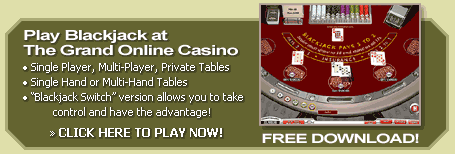Basics of Blackjack Before you can properly play blackjack you must know the basics of blackjack. Blackjack is generally played with from between one and eight decks of cards. The first thing you might notice when you start playing blackjack is that before each new game begins, the dealer spreads the new cards across the table, first face down so that the backs can be inspected for markings, and then face up, enabling both the dealer and the players to determine that there are no extra or missing cards in the deck(s) being used. The rules of blackjack state that a standard 52-card poker-sized deck is used, however the four suits have no significance in the game; only the numerical value of each card is important: 2s through 9s are counted at their point value, and all 10s and face cards are valued at 10. The ace is unique, and can be counted as 1 or 11 at the player’s option. Once the cards have been inspected the dealer thoroughly shuffles the deck or decks of cards. Upon finishing the shuffle, a player is given a colored cut card, which is to be inserted anywhere in the stack of cards being held on the table by the dealer. There are some people that prefer not to cut the cards, if this happens opportunity to cut the cards is then given to the next player. Should there be no one that wants to cut the deck, the dealer will cut the deck himself. After the cut has been completed, the dealer places the colored card toward the back of the stack to indicate when to reshuffle. The dealer will hold the cards in his hand to deal when a single deck is being used. A shoe or dealing box is used when there are multiple decks being used. In both cases, the first card – called a burn card – is not used, but is placed on the bottom of the single deck or in a discard rack. The burn card is not usually shown, but the dealer may expose the card if asked. Now with an understanding of the cards and how they are prepared for play it is time to look at the deal in this portion of the basics of blackjack. Starting with the player on their left (referred to as first base), the dealer deals each player and himself one card. Then every player is dealt a second card with the dealer’s card being dealt face down. The players’ cards are generally dealt face down in the single-deck game and face up in the multi-deck game, regardless of whether the cards are exposed or not, the game play is the same. Even though many bettors do prefer blackjack games played with a single deck, the overwhelming trend is towards the multi-deck game. Not only is face up play much faster, and more profitable for the casino, but the opportunity for a player to cheat is all but eliminated since the players are not allowed to touch their cards. In this introduction into the basics of blackjack we have covered the cards and how they are dealt. Now we will look at how the game unfolds. Once everyone at the table has received their two initial cards, starting at first base, each player is permitted to draw additional cards, which are always dealt one at a time, face up. Should the player go over 21 when a extra card is drawn, they lose; the bet is collected, and their cards are removed from the players position and placed with the rest of the discards. After each of the seated players has acted on their hand, the dealer then must complete their own hand based on fixed blackjack rules that you will find printed on the table covering. These blackjack rules usually include hitting or taking a card on all 16s, and standing on all 17s. In most handheld games, the dealer hits on soft 17s and stands on hard 17s. An important fact to remember when learning the basics of blackjack is that the players’ exposed hands do not affect the dealer’s play. The dealer’s decisions are mechanical. If the dealer does not go over 21 (going over 21 is called breaking or busting a hand), he collects from players with hands totaling less than his; with tying hands or pushes the dealer returns the original bet and winning hands are paid off. We have just covered the basics of blackjack, once the pay offs have been completed the players again place their bets for the next hand it everything starts over. This process continues until the colored cut card appears. When the cut card appears it is time to reshuffle the deck at the conclusion of the hand being played. Resources: Double Down Chart | Hit and Stand Chart | Splitting Pairs Chart |



